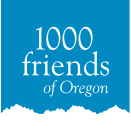The 2021 Legislature directed 11 state agencies to work together to make all Oregon communities more wildfire resilient and prepared. The Department of Land Conservation & Development (DLCD) has issued its draft recommendations on how the land use planning system can contribute to this effort, and they want to hear from YOU. The final recommendations will go to the 2023 legislature, which will decide whether to put any of them in place.
Written comments are accepted until September 16th. Here’s how to get involved:
Use DLCD’s online form to submit comments on their formal recommendations. You can use the talking points we’ve created below, or you can craft your own. If you’d like to read the full recommendations beyond what we’ve summarized, they are available here.
Talking points:
- Our land use planning system is key to preventing and combating wildfires. The Legislature should reinforce this unique strength by preventing sprawl and committing to protect the system.
- Oregon has experienced wildfire in every part of the state, even low-risk areas. It’s important that plans for wildfire preparedness and resiliency include all of Oregon. The regulatory options as outlined in the Wildfire Adapted Communities Recommendations Report are the best path.
- It is critical that conditions of time, place, frequency, intensity and safety are placed on events that are allowed in areas of wildfire risk.
Click here to submit your comments
More information:
1000 Friends has been deeply involved in the process of SB 762 implementation. Here are our in-depth thoughts about the recommendations from DLCD:
- It is widely recognized that Oregon's land use planning system has meant Oregon starts in a better place than our neighboring states as we all deal with climate change and wildfires. Thanks to our urban growth boundaries, Oregon does not have sprawling development into the Wildland Urban Interface like other states do. The Legislature should reinforce this unique strength by preventing sprawl.
- DLCD's recommendations wisely recognize that to be truly wildfire prepared and resilient, Oregon must take proactive steps that go beyond just the highest wildfire risk areas. Therefore, some of DLCD's recommendations also apply to areas of moderate and lower wildfire risk. These categories are all relative. Oregon has experienced wildfire in every part of the state, even low risk areas — so including them in the equation keeps everyone safer.
- For several of its recommendations, DLCD offers both a regulatory path and a voluntary path. We support the regulatory path. We have seen that voluntary steps are not working. For example, they are often geographically spotty when region-wide compliance is needed and they are often not maintained over time, to name a few. The proposed regulations are completely reasonable.
- Many events that attract large numbers of people — such as concerts or weddings — are held at the hottest times of the year at dry locations in rural areas. Most wildfires are human-caused, usually inadvertently. Those two factors can be a recipe for disaster. It is critical that conditions of time, place, frequency, intensity, and safety are placed on events that are allowed in areas of wildfire risk. Issues such as the scale of the events and plans for evacuation and firefighting must be addressed.
